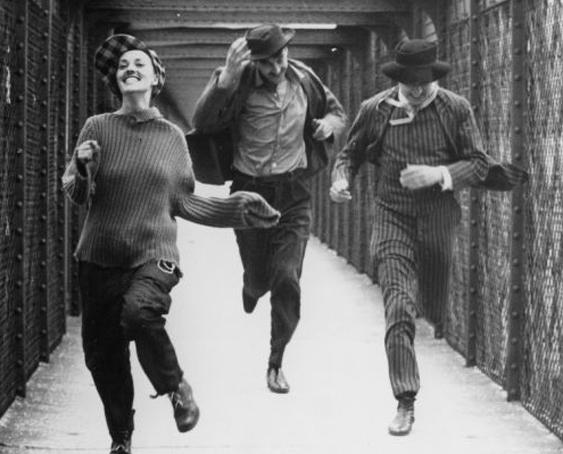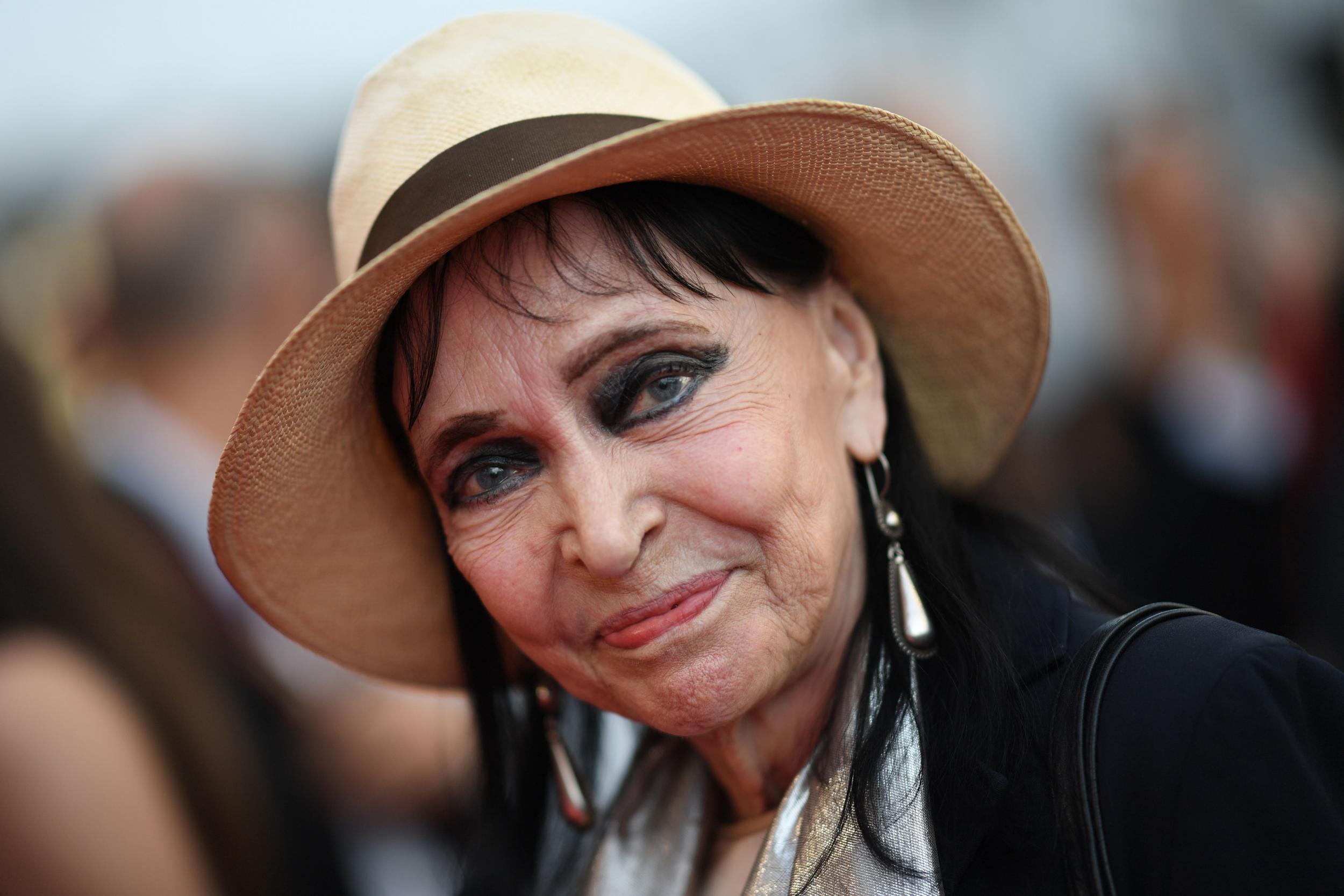What does the French New Wave mean today?
‘Beautiful women. Suave leading men. Existential angst. Black and white figures in Parisian cafes. Cigarette smoke. Lots of it.’ A dismayed Geoffrey Macnab examines the fading interest in what was once one of cinema’s most influential movements

It’s the fate of any radical and revolutionary artistic movement that it begins to look frayed and old-fashioned as its main practitioners grow old and die. That morbid thought is hard to avoid when contemplating the French New Wave. It is now 60 years since François Truffaut made Les Quatre Cents Coups (The 400 Blows, 1959) and almost as long since the premiere of Jean-Luc Godard’s À Bout de Souffle (Breathless, 1960).
It was instructive to witness the strangely muted response earlier this week to news of the death of Anna Karina, the actor sometimes called the “poster girl” of the New Wave. There were plenty of polite obituaries, but few outside France acknowledged the fact that the Danish-born actor had once been one of the most significant European stars of her era. In the early Sixties, when she was playing the young Parisian woman drifting slowly but inexorably into prostitution in Vivre Sa Vie (My Life to Live, 1962), or when performing the famous improvised dance scene in Bande à part (Band of Outsiders, 1964), she had what seemed like the absolute epitome of New Wave cool and charm. Reviewers then rhapsodised about her “grace and luminescence”.
“Anna Karina radiated. She magnetised the entire world. French cinema has lost one of its legends,” lamented French culture minister Franck Riester this week, but his estimation of Karina was not widely shared abroad.
There was a time, though, when everyone else seemed as enraptured as he was with the movement that Karina lit up. Not so long ago in the UK, films such as The 400 Blows, Breathless and Jules et Jim (Jules and Jim, 1962) were in constant circulation. Channel 4 would show lengthy seasons of Godard and Truffaut in the same slots in which you watch Gogglebox today. If there was a new film about a truculent, rebellious kid, that kid would be compared as a matter of course to Truffaut’s alter ego, Antoine Doinel (played over many years by Jean-Pierre Léaud). When a director made a stylised gangster movie involving a girl and a gun, Godard was the immediate point of reference. No film about a love triangle could escape being likened to Jules and Jim.

“Beautiful women. Suave leading men. Existential angst. Black and white figures in Parisian cafés. Cigarette smoke. Lots of it,” wrote critic Chris Wiegand in his book French New Wave, summing up the alluring clichés associated with the movement.
In the Nineties and early Noughties, leading US and UK independent filmmakers lost no opportunity to acknowledge their debt to the French New Wave. Quentin Tarantino named his production company, A Band Apart Films, after one of Godard’s movies. Steven Soderbergh continually invoked the memory of the New Wave directors, singling out Godard as a particular source of inspiration. “Before I do anything, I go back and look at as many of his films as I can, as a reminder of what is possible,” Soderbergh declared. British director Mike Figgis was another who always cited Godard as his touchstone. (“I still find him refreshingly indefinable. I think he is a truly great filmmaker and artist ... to me, he is one of the major artists of the 20th century.”)
Karina’s death followed on from that of Agnès Varda (whose 1955 feature La Pointe Courte is regarded as the first film of the New Wave) earlier this year. Godard himself, now 89, is still alive, working in Prospero-like seclusion in Switzerland, but all the other major directors associated with “La Nouvelle Vague” are gone. Truffaut died way back in 1984; Eric Rohmer in 2009; Claude Chabrol in 2010; Alain Resnais in 2014 and Jacques Rivette in 2016. Their films are reissued from time to time in dutiful fashion but have far less influence now than at any time since they first appeared. There is a dispiriting feeling that they are passing out of public consciousness.
The release next month of Benedict Andrews’ Seberg may jog memories a little. The film stars Kristen Stewart as Jean Seberg, the ill-fated American actor who became a Karina-like face of New Wave cool after appearing in Breathless. However, it’s more about her persecution at the hands of the FBI than it is about her work with Godard.
The irony is self-evident. Truffaut and co once railed against the “tradition of quality” in French cinema. They didn’t care for the “insipid” and “bourgeois” literary adaptations then clogging up French cinemas or for those high-minded French films written by Jean Aurenche and Pierre Bost in which the filmmakers always seemed to be looking down on their characters. The New Wave directors were young non-conformists who were re-inventing cinematic language and film programming. That, at least, was how it seemed 60 years ago. Today, their work has long since been accepted into the canon. It doesn’t appear so fresh or revolutionary to contemporary viewers.
Why should it matter if people are no longer watching the films made six decades ago by the New Wave directors? One might argue that these films have already had far more attention paid to them by British and international audiences than any other French films before or since. It was only to be expected that their popularity would eventually ebb away.
The counter-argument is that the French New Wave represented one of the few and very precious moments in film history during which popular taste and the avant-garde merged. The filmmakers behind the movement, most of them former critics on highbrow magazine Cahiers du Cinéma, revolutionised film style. They used jump cuts and narrative devices they borrowed from modernist literature. Their work could have seemed very forbidding indeed. However, it hit a chord. The most glamorous actors, whether Brigitte Bardot in widescreen in Le Mépris (Contempt, 1963) or Jean-Paul Belmondo with a Gitane on his lips in Breathless, were among their stars.
The New Wave directors and critics would generalise wildly and make absurdly lofty claims on behalf of films they liked while dismissing others out of hand. “I think a lot of Cahiers’ peculiar tastes were because they didn’t speak English,” Penelope Houston, the editor of British film magazine Sight & Sound, later claimed of them. “Their passion for American cinema was based on not understanding the dialogue.”
The movement’s leaders worshipped Hollywood filmmaking – directors such as Alfred Hitchcock and Howard Hawks, in particular. Godard had a special fondness for madcap comedian Jerry Lewis, whom the Cahiers critics called “le Roi du Crazy”. At the same time, they dismissed French cinema made by an older generation, they revered films made by those they declared to be “auteurs”, whose genius went unrecognised within the Hollywood system. They would watch endless films in double and triple bills at the Cinémathèque Française, programmed and presided over by the chaotic but inspirational archivist Henri Langlois, who stored prints wherever he could (including, it is claimed, in his bath). There was something comical, touching and endearingly pretentious about their attitude towards cinema.
All this is a familiar story. The New Wave has inspired countless books, documentaries, biopics and scholarly articles. Godard once helped to close down the Cannes Festival (in 1968), and has continued to make as much mischief as he can whenever he visits today, but he is now a venerable figure there. That is as it should be. The downside, though, is that the respect afforded to the former young firebrands of French cinema has had a deadening effect. Now they are as much a part of the establishment as the cinema they once derided
Audience tastes have shifted, too. Mike Figgis talked about how boring he found Godard’s movies – in a good way, of course. “With him, I am always able to deal with ideas. Because his ideas are so interesting, I may be bored, very, very deeply bored by something he does for a period of time. I have no problem with that,” the British director said, before adding: “It’s part of the process. I know it will be followed by something that is absolutely scintillating.” It’s debatable whether today’s cinemagoers are prepared to wade through the longueurs in order to reach the magical moments referred to by the British director.
The paradox is that French New Wave cinema has become so familiar that no one pays much attention to it any more. It has long since lost its novelty value. There is little excitement at yet another revival of Breathless or re-release of Les Parapluies de Cherbourg (The Umbrellas of Cherbourg), 1964.
You won’t find many Truffaut or Rivette films on Netflix. The work is readily available on DVD and Blu-Ray but isn’t easy to stumble on. The cursory response in the British media to the death of Karina, an iconic figure in New Wave cinema, is just another dismaying sign of how quickly interest has faded in films audiences were once desperate to see.
Seberg is released on 10 January
Join our commenting forum
Join thought-provoking conversations, follow other Independent readers and see their replies
Comments